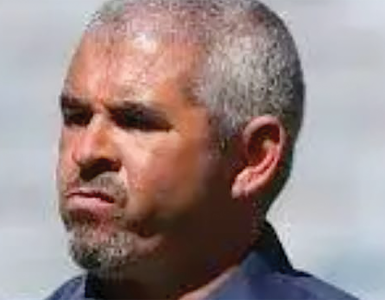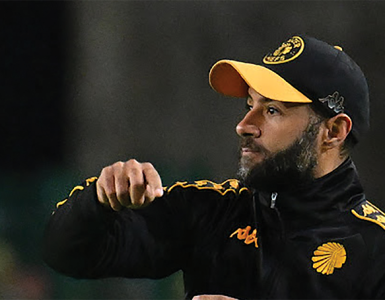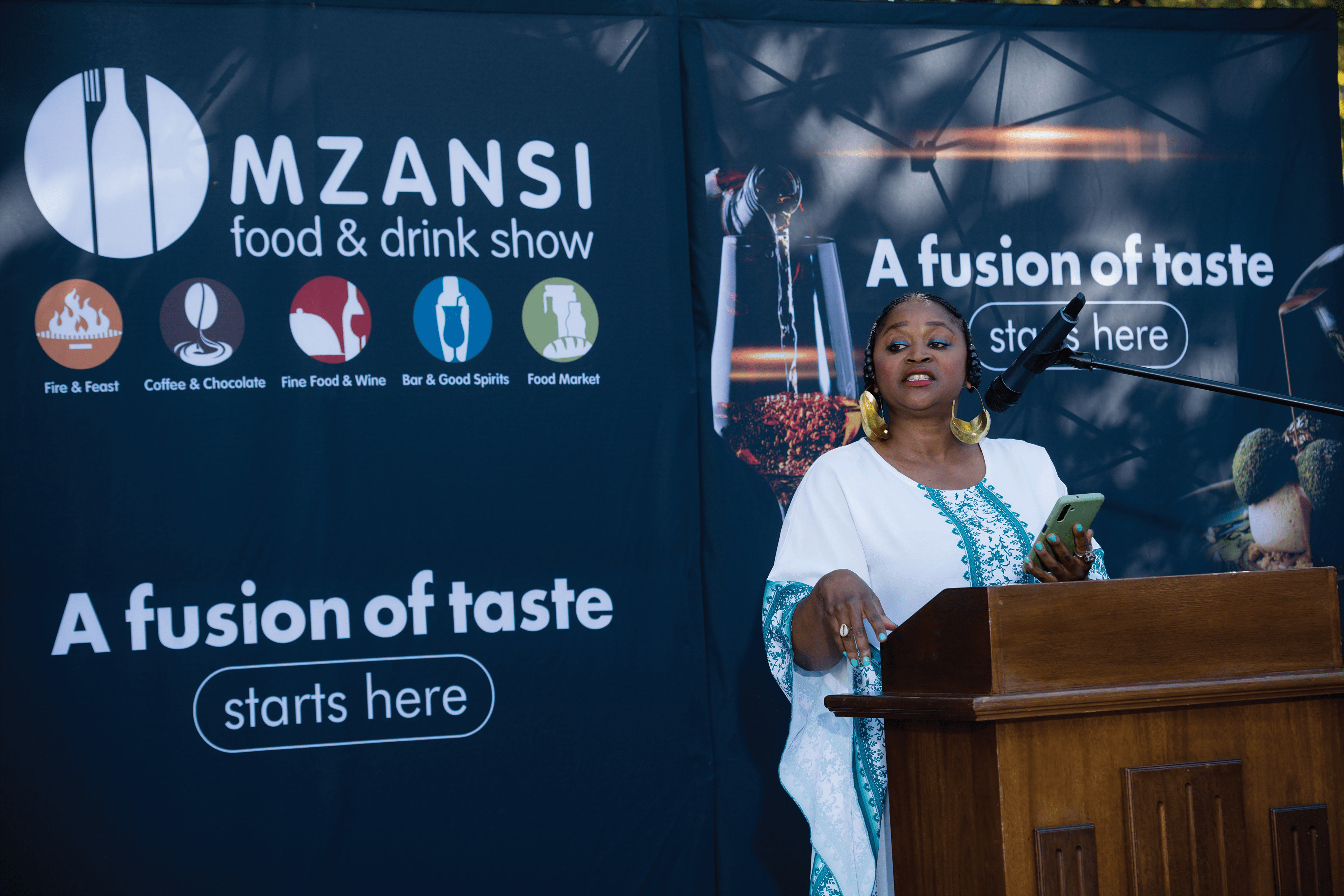PIONEER: Arthur’s greatest legacy was his activism for social justice, and not his tennis
By Patricia Whitehorne
Fifty-years-ago, Arthur Ashe pulled off an amazing feat, upsetting the odds and becoming the first black man to win the Wimbledon Men’s final when he beat fellow American Jimmy Connors – but it was not something he wanted to define his life.

His fight to break down barriers around racial discrimination was closer to his heart – and apartheid South Africa became one of his battle grounds.
“I don’t want to be remembered in the final analysis for having won Wimbledon… I take applause for having done it, but it’s not the most important thing in my life – not even close,” he said in a BBC interview a year before his death in 1993.
Nonetheless his Centre Court victory on July 5, 1975 was hailed as one of those spine-tingling sporting moments. Ashe was already in his 30s, tall, serene and with a quiet and even-tempered demeanour. Connors, 10 years younger and the defending champion, was an aggressive player and often described as “brattish”.
In the early 1970s, South Africa repeatedly refused to issue a visa for him to travel to the country alongside other US players. The white-minority government there had legalised an extreme system of racial segregation, known as apartheid – or apartness – in 1948.The authorities said the decision to bar him was based on his “general antagonism” and outspoken remarks about South Africa. However, in 1973, the government relented and granted Ashe a visa to play in the South African Open.
It was Ashe’s first visit to South Africa. He said he would only play on condition that the stadium be open to both black and white spectators. British journalist and tennis historian Richard Evans, who became a life-long friend of Ashe, was a member of the press corps on that South Africa tour.
He says that Ashe was “painfully aware” of the criticism and the accusation that he was in some way giving legitimacy to the South African government – but he was determined to see for himself how people lived there.
“He felt that he was always being asked about South Africa, but he’d never been. “How can I comment on a place I don’t know?” Evans recalls that during the tour, the South African writer and poet Don Mattera had organised for Ashe to meet a group of black journalists, but the atmosphere was tense and hostile.
“As I passed someone,” Evans told the BBC, “I heard someone say: ‘Uncle Tom’” – a slur used to disparage a black person considered servile towards white people. “And then one or two very vociferous journalists stood up and said: ‘Arthur, go home. We don’t want you here. You’re just making it easier for the government to be able to show that they allow someone like you in.’”
Ashe went to Soweto in November 1973 to hold tennis clinics for children in the township. The South African author and academic Mark Mathabane grew up in the Alexandra township – popularly known as Alex – in the north of Johannesburg.
Such townships were set up under apartheid on the outskirts of cities for black people to live. He first became aware of Ashe as a boy while accompanying his grandmother to her gardening job at a British family’s mansion in a whites-only suburb.
The lady of the house gifted him a September 1968 edition of Life magazine from her collection, and there, on the front cover, was a bespectacled Ashe at the net.
Mathabane was mesmerised by the image and its cover line, “The Icy Elegance of Arthur Ashe” – and he set out to emulate him. When Ashe went on the 1973 tour, Mathabane had only one mission – to meet him. The opportunity came when Ashe took time off from competing to hold a tennis clinic in Soweto, a southern Johannesburg township.
The 13-year-old Mathabane made the train journey to get there and join scores of other black – and mostly young – people who had turned out to see the tennis star, who they had given the nickname “Sipho”.
“He may have been honorary white to white people, but to us black people he was Sipho. It’s a Zulu word for gift,” Mathabane, now aged 64, said.
“You know, a gift from God, from the ancestors, meaning that this is very priceless, take care of it. Sipho is here, Sipho from America is here.” Excited crowds descended on the tennis clinic to catch a glimpse of the superstar tennis player. By 1973 Ashe had already won the US Open and Australian Open.
The excitement generated at the Soweto clinic was not just contained to that township; it spread across the country, he said. From rural reservations to shebeens or speakeasies (bars) – wherever black people gathered, they were talking about Ashe’s visit. After the 1973 tour, Ashe went back to South Africa a few more times. In early 1976 he helped to establish the Arthur Ashe Soweto Tennis Centre (AASTC) for budding players in the township.
But not long after it opened, the centre was vandalised in the student-led uprisings against the apartheid regime that broke out in June of that year.
It remained neglected and in disrepair for several years before undergoing a major refurbishment in 2007, and was reopened by Ashe’s widow Jeanne Moutoussamy-Ashe. The complex now has 16 courts, and hosts a library and skills development centre. The Arthur Ashe Soweto Tennis Centre has big ambitions – and Serena and Venus Williams have held tennis clinics there.
The ambition is to produce a tennis star and Grand Slam champion from the township – and legends such as Serena and Venus Williams have since run clinics there. For Mothobi Seseli and Masodi Xaba, who were once both South African national junior champions, the centre goes beyond tennis.
They feel that fundamentally it is about instilling a work ethic that embraces a range of life skills and self-belief.
“We’re building young leaders,” Xaba, a successful businesswoman, told the BBC. Seseli, an entrepreneur born and raised in Soweto, agrees that this would be Ashe’s vision too: “When I think about what his legacy is, it is believing that we can, at the smallest of scales, move the dial in very big ways,” said Xaba.”
Ashe was initially inclined to challenge apartheid through conversations and participation, believing that by being visible and winning matches in the country he could undermine the very foundation of the regime.
But his experience within South Africa, and international pressure from the anti-apartheid movement, persuaded him that isolation rather than engagement would be the most effective way to bring about change in South Africa.
“Arthur Ashe became a powerful advocate and supporter of an international sporting boycott of South Africa, speaking before the United Nations and the US Congress,” said Xaba.
In 1983, at a joint press conference set up by the Organisation of African Unity (OAU) and UN, he spoke about the aims of the Artists and Athletes Against Apartheid, which he had just co-founded with the American singer Harry Belafonte.
Ashe and US singer Harry Belafonte, seen here during an anti-apartheid protest outside the UN in New York, founded Artists and Athletes Against Apartheid
The organisation lobbied for sanctions against the South African government, and at its height had more than 500 members.
Ashe joined many protests and rallies, and when he was arrested outside the South African embassy in Washington DC in 1985, it drew more international attention to the cause and helped to amplify global condemnation of the South African regime.
Ashe used his platform to confront social injustice wherever he saw it, not just in Africa and South Africa, but also in the US and Haiti.
He was also an educator on many issues, and specifically HIV/Aids, which he succumbed to, after contracting the disease from a blood transfusion during heart surgery in the early 1980s.
He said that he identified with black Africans because of his upbringing in racially segregated Richmond in the US state of Virginia.
No wonder then that Ashe was one of the key figures that South African anti-apartheid hero Nelson Mandela was keen to meet on a trip to New York, inviting him to a historic townhall gathering in 1990 shortly after his release from 27 years in prison.
The pair met on a few occasions, however Ashe did not live to see Mandela become president of South Africa following the 1994 election, which brought in democratic rule and the dismantling of apartheid.
Listen to what Mark Mathabane has to say about Ashe: “To celebrate this year’s anniversary of Ashe’s victory, the Wimbledon Championships have an installation in the International Tennis Centre tunnel and a new museum display about him.”
But to many people like Mathabane – who in 1978 became the first black South African to earn a tennis scholarship to a US university – Ashe’s legacy was his activism, not his tennis. –BBC News


































